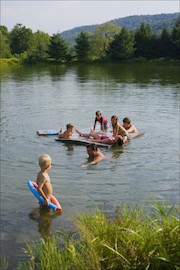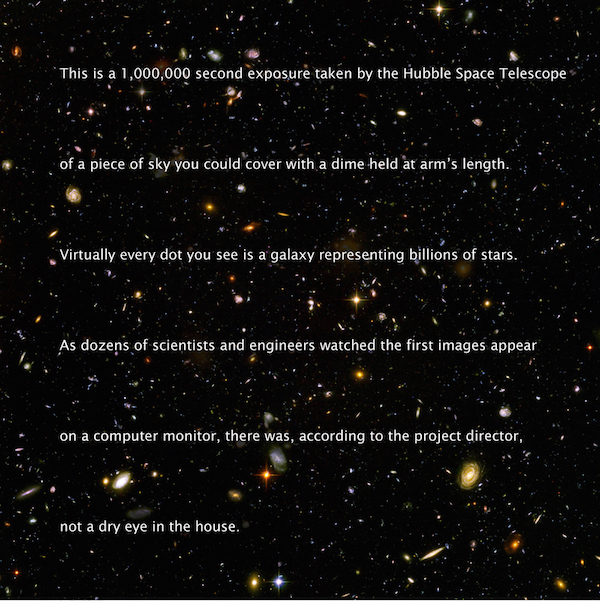Words and pictures: The third effect
posted Thursday, March 26, 2015 at 9:36 AM EDT

Today’s topic is difficult to photograph. It’s all about words. In fact, it is words, the words you put with your pictures.
Any language that accompanies your pictures is going to change the viewers reaction to the picture. For example, “Can’t wait to see you at the picnic this Saturday” attached to a picture of your family gets a very different reaction than “Bob and I have decided to get a divorce.”
My point in this extreme and silly example is that the words change the picture. There is a third effect that happens when you decide to say something and present a photograph. It’s an effect that you don’t and can’t get from the words or the pictures alone. The beauty of this third effect is that you can use it to enhance your photographs.
I wish I’d coined the phrase The Third Effect, but I didn’t. Wilson Hicks, the great Life Magazine picture editor wrote about it in his classic book, Words and Pictures. He felt that words and pictures together were the building blocks of what we now consider photojournalism. If you ever wonder about the power of words collaborating with pictures, pick up any issue of National Geographic and read the captions. There are people at National Geographic that do nothing but write captions.
The cardinal sin for any writer of a photo caption—and I’m calling the little note you send to your mother with the picture of the kids at the beach as a caption—is to tell the viewer what they can already see in the photograph. Let the photographs do what they do best—they show people things. Then, make sure the words add another punch. If you don’t you’ve missed an opportunity. And it doesn’t matter if you’re the chief caption writer at a big magazine or the person deciding what to say with your Christmas cards.
Let’s use the kids at the beach example. Pretend the photograph is of two little kids swimming. Here are two very different captions:
- Caption one: Here are Luke and Emily swimming.
Sorry. We already know that. That’s why you sent the photo in the first place. We can see that Luke and Emily went swimming.
- Caption two: On the first day of the vacation, we practically had to throw the kids into the water. On the last day, we couldn’t get them out.
You’ve now given something for the viewers imagination to latch onto. Kids that don’t want to go in the water or get out generally aren’t great photographs, but the words create another picture in the mind; it’s a great word picture. We get an idea of what happened and how people felt about it. So do your very best not to state the obvious about your pictures.
And one way to ruin the effect of an otherwise wonderful photograph is to misspell the name of the person in the picture. If you are ever responsible for taking a picture for your church or school and it’s a simple little group shot, make sure you have the left to right, back row, front row all figured out and everyone’s name is spelled correctly. It’s a pain to do and so important that it’s done correctly.

I can still feel the disappointment of bad caption information from my childhood. I was having a water balloon fight with Phil Ronning and a car stopped and a man with a camera around his neck approached us. He took several pictures of me dumping a bucket of water on my head. He wrote our names down and the next day it was on the front page of our local paper.
It was really a nice picture of me except for one thing. The name was wrong. It was a picture of Nick and the caption said it was Phil and it took all of the fun out of it. I still feel bad.
My point it this. Under all circumstances take your pictures AND words seriously. They make a difference. They make a third effect.
(An exceptional educator and a world-class photographer, Nick Kelsh is the founder of How To Photograph Your Life, an excellent source of affordable photography training and tips. Nick’s courses can be conducted by yourself in your own time, or with feedback from Nick and your fellow students. If you appreciated this article and want to improve your photography, visit How to Photograph your Life and sign up for a course today!)